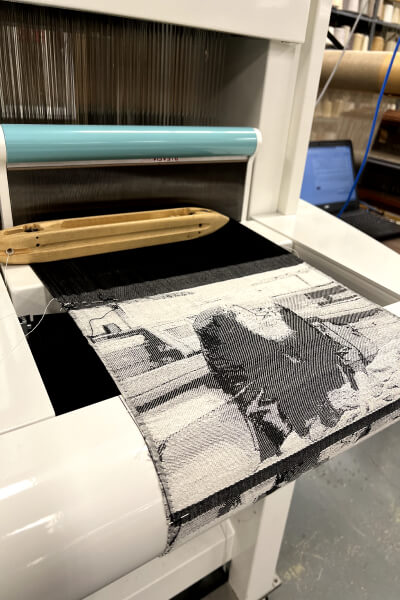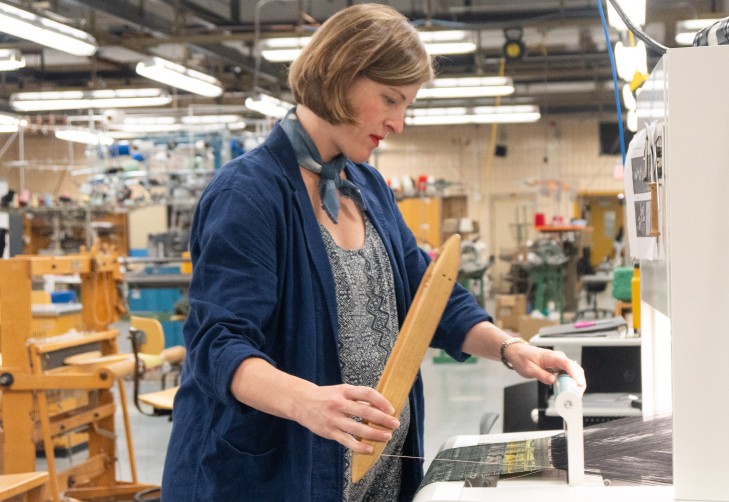Artifact
DREAM WEAVER
FIT’s computerized jacquard loom mixes old and new technology
FIT’s new jacquard loom, the TC2, gives students the power to create just about any pattern—including a photograph—in fabric.
“It’s a hand loom, but the pattern control is all electronic,” explains Patrice George, the retired associate professor of Textile Development and Marketing (TDM) who helped FIT acquire it in 2021. “It gives the weaver total freedom to envision something large and try out structures instantly.
The jacquard loom, invented in 1804, made it possible to weave complex designs. Nowadays, jacquard looms used in industry are fully automated and massive, not suitable for a college campus. Contrast that with the manually operated TC2, which is compact, easy to set up, and affordable, ideal for an educational context: MIT, Cornell, and Stanford all own this model.


The downside is that the weaving must be done one thread at a time, so a small piece of fabric could take hours to construct. But hand-weaving allows for the use of nontraditional wefts (the yarns that run horizontally), such as conductive fibers, straw, and gold chains, to make e-textiles or artworks.
“Any sort of mechanical loom would reject those immediately,” says Whitney Crutchfield, assistant professor of TDM. “I’d love to see students experiment with circuits, sensors, or LED lights.”

George had long wanted a TC2 for FIT, and Covid-19 brought an unexpected opportunity. A demo loom that had been traveling around the U.S. as a sales tool was sitting idle when the pandemic suspended in-person meetings. Its Norwegian manufacturer, Tronrud Engineering, offered it to the Jay and Patty Baker School of Business and Technology at a deep discount. Now it’s used in the yearlong Woven Technology class for TDM students, and Crutchfield and George have bigger plans.
They envision interdisciplinary collaboration between textile experts and computer scientists at FIT and beyond, specialists who could program the loom in innovative ways.
“It’s a really accessible entry point for programmers and weavers to come together,” Crutchfield says.